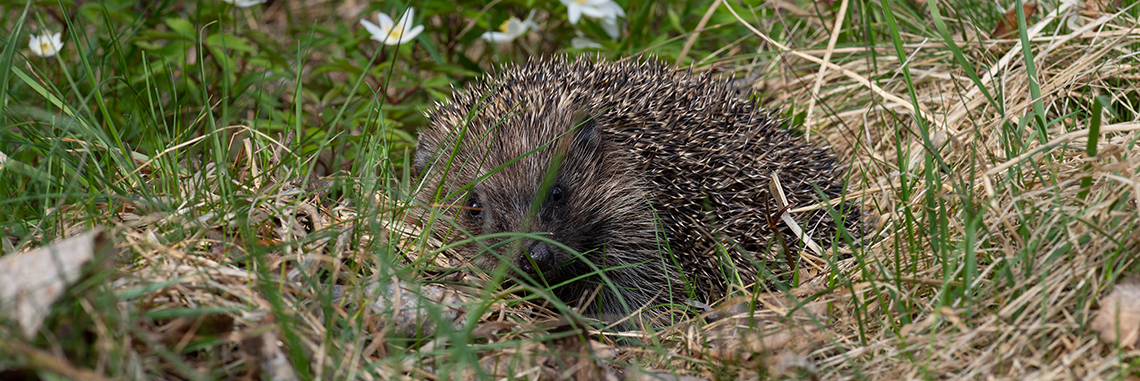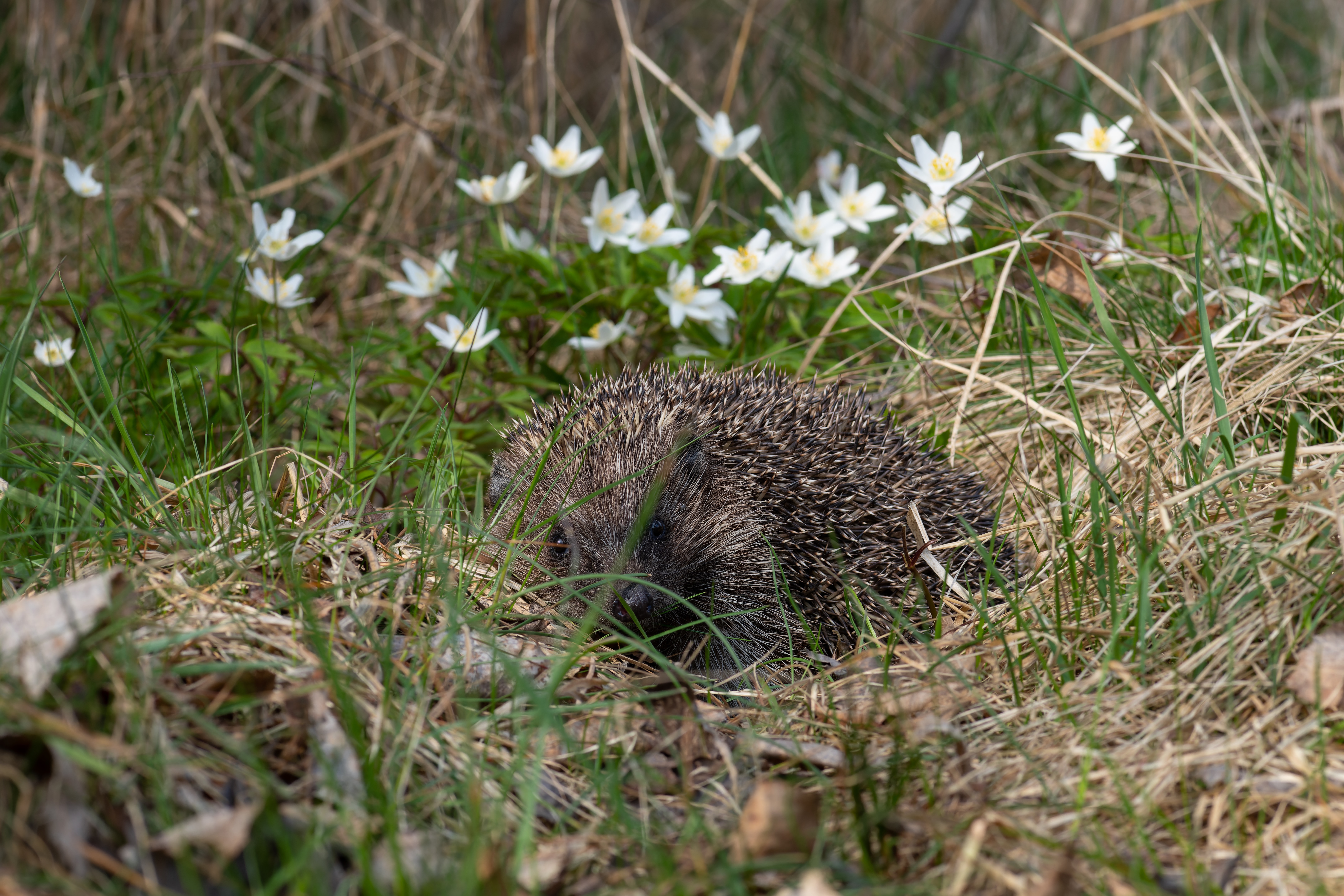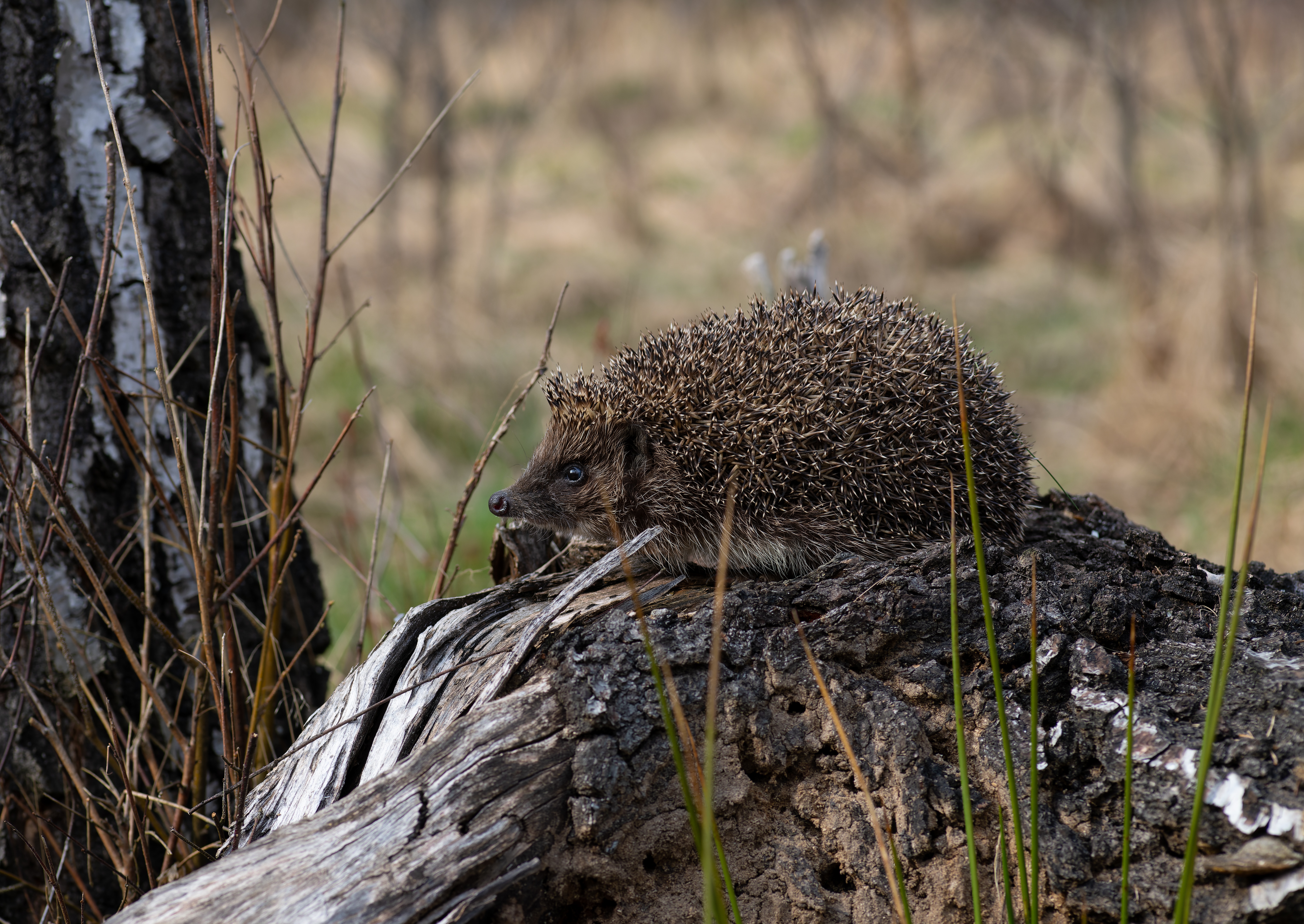The Friendly Garden Hedgehog

By Jose Luis Gallego, environmental communicator (@ecogallego)
Most of you will have likely encountered our protagonist at some point, either in your garden or on a walk in the outskirts or even in a city park. This is one of the most trusting, amiable, and harmless animals to share our natural environment. So much so that they are often spotted around country houses, much to the great delight of children who celebrate the hedgehog’s presence like that of a good-natured friend.
The common or European hedgehog, which scientists refer to as Erinaceus europaeus, doesn’t really need further description: the long sharp spines that cover its back make this one of the most easily identifiable wild mammals. With its round build, short hairless legs, and tapered rodent-like snout, the hedgehog sports one of the most unmistakable morphologies in all Iberian fauna.
In addition to its spiny armour, the hedgehog has highly evolved ears with an acute sense of hearing, rivalled by a very fine sense of smell thanks to its pointed nose covered with vibrissae: long stiff hairs that act as tactile organs, a feature the hedgehog shares with many other wild mammals.

A common hedgehog in the forest
Hedgehogs are almost 30 centimetres long, and males – which are larger than females – can grow to weigh more than 1.25 kilos.
This insect-eating mammal is as unique in its behaviour as it is in appearance. Crepuscular by nature, hedgehogs developed an armour of hard, sharp spines – about 3 centimetres long – that provides them with an excellent defence against any outside attack. But there is more: the animal also developed curious circular muscles along its back, which allow the hedgehog to roll into a spiky ball, uninviting and dangerous to touch and a decidedly risky morsel for any predator foolish enough to take a bite.
This is an absolutely decisive defence mechanism when it comes to run-ins with the hedgehog’s natural predators – foxes, eagles, and eagle-owls – but completely useless in the face of its worst enemy: the car.
Among all the studies dedicated to this worrisome aspect of nature conservation, hedgehogs rank the highest of all wildlife killed on the road. When a hedgehog decides to cross a road that cuts through its territory and sees two beams of light bearing down on it, the animal’s reaction is to curl into a ball, because its legs are too short for a quick escape. Although nature endowed the hedgehog with this impressive evolutionary resource, this sophisticated and effective tool, it is futile against the heavy chassis of a car or truck.
Widely distributed across all ecosystems with an abundance of trees and low scrubland, the common hedgehog can be found everywhere on the Iberian Peninsula save for some arid areas. By contrast, the North African hedgehog (Atelerix algirus), which is almost identical but somewhat smaller, slightly lighter in colour, and originally from North Africa, has established communities along the Mediterranean coast, especially in areas not populated by its common cousin – places like Ceuta, Melilla, the Balearic and Canary Islands.

Common hedgehog on a piece of fallen tree bark in the forest
To spot a hedgehog, a crepuscular and nocturnal creature, it is useful to be able to identify its tracks: small imprints showing five toes with their respective nails. Hedgehog droppings are black, cylindrical, and compact, with an abundance of the chitinous remains of insects, which, along with forest fruit and berries, make up the mainstay of the animal’s diet.
Personally, I have been lucky enough to welcome several hedgehogs to our garden, encounters which we have always celebrated as a gift from nature. That said, after observing our visitors with curiosity and respect, we have always helped them make a swift exit so they could find their way back to the forest, which is and should always be their rightful home. So, I call on all readers: should you be lucky enough to have our good-natured friend drop by your garden, please don’t try to capture the hedgehog, much less keep it as a pet.
